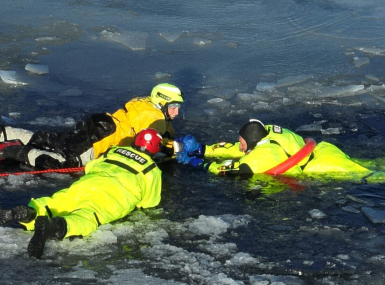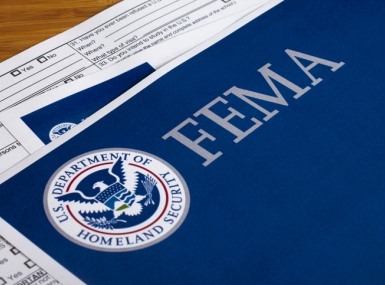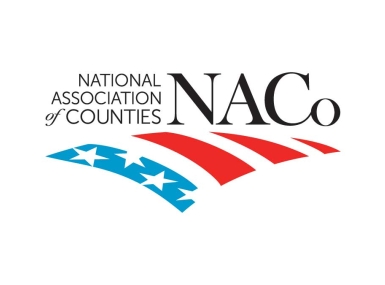Probation Landscape Web Tool

Upcoming Events
Related News
County governments play a central role in public safety and the administration of justice. Cumulatively, counties invest $107 billion in justice and public safety efforts each year. One component of the criminal legal system is community supervision.
NACo – in collaboration with The Pew Charitable Trusts (Pew) – developed this resource to categorize the national landscape for probation. This tool can be utilized to better understand the probation operating model of different states. Counties can leverage this information to identify the similarities and differences across various probation systems. This ultimately can be a helpful foundation to support innovation in supervision and reentry.
Terms to Know
- Community supervision (community corrections) is a sentence that places an individual charged with a crime under correctional authority oversight in the community, commonly in a form of probation or parole.[i] This pathway can serve as an alternative to incarceration.
- Probation is a form of community supervision imposed by a court, which can serve as an alternative to incarceration for part or all of a sentence.[ii]
- Conditions of supervision are the rules that an individual under community supervision must follow to successfully complete their sentence; these can vary by case and jurisdiction.[iii]
- Technical violations are actions of noncompliance with one or more supervision conditions that may result in a sanction or revocation.[iv]
- Revocation is when an individual is sent to jail or prison for violating conditions of supervision (technical violation) or for a new crime.[v]
Why Probation Matters
The community corrections populations accounts for over half of the total population under the correctional authority of the criminal legal system.[vi] According to the U.S. Department of Justice, Bureau of Justice Statistics, an estimated 3,750,000 individuals were under community supervision in 2021.[vii] Persons on probation made up 79 percent of the total community supervision population. The community supervision rate, nationally, has been in decline for the past decade.[viii] In 2021, the community supervision rate was 1,440 persons on probation or parole per 100,000 adult U.S. residents, a 21-year low.[ix] Despite the decline, community supervision remains a leading driver of mass incarceration, fueled by the high number of unsuccessful supervision cases.[x] Defining an individual’s successful completion of probation can vary by jurisdiction. This could include not engaging in any new criminal behavior, paying all fines and fees due and completing required treatments. Only about half of individuals successfully complete the terms of their community supervision.[xi] At the state level, approximately one in four admissions to state prison are due to technical violations.[xii]
Improving the success rate of community supervision can result in a number of positive outcomes for counties and the residents we serve. This includes enhancing public safety, reducing incarceration and decreasing substance misuse.[xiii]
County Role in Probation
Counties are the primary authority for local criminal legal systems nationwide. Counties operate 90 percent of all local jails. Moreover, 95 percent of incarcerated individuals will reenter the community, and counties provide services and support throughout the period of reentry. Therefore, the county role in reentry is supporting the individual during and after incarceration – and often during a period of community supervision – so that they may be successful and do not return to jail.
As is relates to community corrections, counties are responsible for management of felony supervision in about 18 percent of states. In addition, counties are responsible for management of misdemeanor supervision in about 36 percent of states. Variance in these distributions is attributable to the unique community corrections policies in certain states.
Six states operate a unified corrections system, in which there is an integrated state-level prison and jail system.[xiv] In other words, these states do no operate local (county or city) jails. These states are Alaska, Connecticut, Delaware, Hawaii, Rhode Island and Vermont.
Landscape Web Tool
The tool is categorized by four types of operating policy: state, county, mixed and other. Listed within each category are the states that fall under each operating policy, along with a summary of the community supervision operations for each state. The summaries refer to felony and misdemeanor adult probation unless otherwise specified.
Key
- State: Probation/community supervision is operated or managed at the state level.
- County: Probation/community supervision is operated or managed at the county level.
- Mixed: Probation/community supervision is operated under a mixed-responsibility management system; generally, the state manages felony supervision and counties manage misdemeanor supervision.
- Other: Probation/community supervision is operated under a model not accurately represented by the previous categories. For example, a state may have probation that is managed by judicial districts or multi-county regions.
View Full List
- Alabama | Alabama has state-run probation and parole managed by the Alabama Board of Pardons and Paroles.
- Alaska | Alaska has state-run felony probation managed by the Alaska Department of Corrections, Division of Probation and Parole. Misdemeanor probation is not supervised.
- Arkansas | Arkansas has state-run probation managed by the Arkansas Department of Community Corrections. Note, some court districts may contract with a private company to oversee misdemeanor supervision.
- Colorado | Colorado has state-run probation managed by Colorado's Judicial Branch. Supervision for people deemed low risk may be outsourced to private companies.
- Connecticut | Connecticut has state-run probation managed by the Court Support Services Division Adult Probation.
- Delaware | Delaware has state-run probation managed by the Department of Corrections, Bureau of Community Corrections.
- Hawaii | Hawaii has state-run probation managed by the State Judiciary Department, Adult Client Services Branch.
- Kentucky | Kentucky has state-run probation and parole managed by the Kentucky Department of Corrections, Division of Probation and Parole. The department is divided into four regions, each compromised of districts. In total there are 20 districts. A majority of the districts are multi-county.
- Louisiana | Louisiana has state-run probation and parole managed by the Department of Public Safety and Corrections, Division of Probation and Parole.
- Maine | Maine has state-run probation and parole managed by the Department of Corrections, Division of Adult Community Corrections.
- Maryland | Maryland has state-run probation and parole managed by the Department of Public Safety and Correction Services, Division of Probation and Parole.
- Mississippi | Mississippi has state-run probation and parole managed by the Mississippi Department of Corrections, Community Corrections Division.
- Missouri | Missouri has state-run probation managed by the Missouri Department of Corrections, Board of Probation and Parole. The Board supervises felony and Class A misdemeanor cases. All other misdemeanor cases are supervised by the courts or private services.
- Nebraska | Nebraska has state-run probation managed by the State Judicial Branch. Caseloads are divided amongst 15 district offices, 34 satellite offices and six intensive supervision probation regions.
- New Hampshire | New Hampshire has state-run probation managed by the Department of Corrections, Division of Field Services.
- New Mexico | New Mexico has state-run probation and parole managed by the New Mexico Corrections Department, Probation and Parole Division.
- North Carolina | North Carolina has state-run probation managed by the Department of Adult Corrections, Division of Community Supervision.
- North Dakota | North Dakota has state-run probation managed by the Department of Corrections, Division of Field Services. Most persons charged with misdemeanor cases are placed under programs operated by private contractors.
- New Jersey | New Jersey has state-run probation managed by State judiciary.
- Oklahoma | Oklahoma has state-run probation and parole managed by the Oklahoma Department of Corrections, Division of Probation and Parole/Community Corrections.
- Rhode Island | Rhode Island has state-run probation and parole managed by the Community Corrections unit of the Department of Corrections, Division of Rehabilitative Services.
- South Carolina | South Carolina has state-run probation and parole managed by the South Carolina Department of Probation, Parole and Pardon Services.
- South Dakota | South Dakota has state-run probation managed by the Unified Judicial System's Court Services Department.
- Vermont | Vermont has state-run probation managed by the Vermont Department of Corrections.
- Wisconsin | Wisconsin has state-run probation and parole managed by the Wisconsin Department of Corrections, Division of Community Corrections.
- Wyoming | Wyoming has state-run probation and parole managed by the state Department of Corrections (DOC), Division of Field Services. The Wyoming DOC supervises both felony and misdemeanor cases. However, there are some locations where the courts use private entities for misdemeanor supervision.
- Arizona | Arizona has county-run probation managed by county departments. Six of the county departments operate both adult and juvenile supervision.
- California | California has county-run probation managed by county departments. Every county has a probation department, except for San Francisco City and County which has two departments (one for adult and one for juvenile probation).
- Indiana | Indiana has county-run probation services. In most counties one agency manages both adult and juvenile probation, but in some counties adult and juvenile supervision responsibilities are divided amongst separate agencies.
- New York | New York has county-run probation managed by the Division of Probation and Correctional Alternatives (DPCA). County probation departments administer the supervision.
- Oregon | Oregon has county-run probation managed by county agencies.
- Pennsylvania | Pennsylvania has county-run probation managed by county departments. In two counties, probation is managed by the Board of Probation and Parole.
- Texas | Texas has county-run probation managed by local Community Supervision and Corrections Departments (CSCDs). There are 121 total CSCDs; some departments serve multiple counties.
- West Virginia | West Virginia has county-run probation managed by local probation departments. The local probation departments operate probation supervision in the state's 31 judicial circuits.
- Florida | Florida has a mixed probation system. Felony probation is state-run and managed by the Florida Department of Corrections, Office of Community Corrections. Misdemeanor probation is managed by either the county or a private agency.
- Georgia | Georgia has a mixed probation system. Felony probation is state-run managed by the Department of Corrections, Probation Division. Counties are responsible for misdemeanor probation supervision, or private entities can be contracted to manage misdemeanor supervision.
- Idaho | Idaho has a mixed probation system. Felony probation is state-run managed by the Department of Correction's Division of Probation and Parole. Misdemeanor probation is county-run.
- Montana | Montana has mixed probation system. Felony probation and parole is state-run and managed by the Department of Corrections, Community Corrections, Division of Probation and Parole. Misdemeanor probation may be managed by either the county or a private entity.
- Nevada | Nevada has a mixed probation system. Felony probation is managed by the Nevada Department of Public Safety, Division of Parole and Probation. Misdemeanor probation and juvenile probation are managed by the counties.
- Tennessee | Tennessee has a mixed probation system. The Tennessee Department of Correction, Community Supervision Division, manages felony probation and select misdemeanor probation cases. The Department also administers Community Corrections grant contract programs that provide felony supervision and treatment and are managed by local governments or qualified private entities. Most misdemeanor probation cases are managed on a local level by county or private probation services.
- Utah | Utah has a mixed probation system. Felony probation is managed by the Utah Department of Corrections, Division of Adult Probation and Parole. Minimum supervision cases are managed by either local or private entities.
- Virginia | Virginia has a mixed probation system. Felony probation is state-run managed by the Virginia Department of Corrections' Community Corrections section. Misdemeanor probation and lower-level felony probation is managed by local community-based probation agencies.
- Washington | Washington has a mixed probation system. Felony probation is state-run managed by the Department of Corrections, Community Corrections Division. Misdemeanor probation is managed by the counties.
- District of Colombia | The District of Columbia operates adult probation and parole that is managed by the Community Services and Offender Supervision Agency (CSOSA). CSOSA is a federal agency directly responsible for adult supervision in the District of Colombia.
- Illinois | Illinois has a bifurcated probation system (a combination of state and county operations). Illinois' 23 Judicial Circuits are administered by Chief Circuit Judges, who oversee county or multi-county probation departments. These departments operate both adult and juvenile, and both misdemeanor and felony probation.
- Iowa | Iowa has probation and parole managed by eight multi-county district departments. The Iowa Department of Corrections provides statewide coordination.
- Kansas | Kansas probation is managed by 31 local probation departments, divided by judicial district or multi-county regions.
- Massachusetts | Massachusetts Probation Service consists of 105 probation departments, one for each of the 105 courts. The four court levels are (1) Superior Court, primary jurisdiction for felony cases; (2) District Court, low-level felony and misdemeanor cases; (3) Juvenile Court; and (4) Probate and Family Court. The field offices are overseen by the Office of Commissioner of Probation.
- Michigan | Michigan has state-run felony probation and parole managed by the Michigan Department of Corrections, Field Operations Administration. Misdemeanor supervision is managed by district courts.
- Minnesota | In Minnesota, the Community Corrections Act establishes three tiers of supervision responsibility. Counties that participate in the Community Corrections Act manage all supervision services in their respective counties. In counties operating a shared responsibility model between the county and the Department of Corrections (DOC/CPO Model), felony supervision is managed by the DOC and the counties manage adult misdemeanor and juvenile supervision. In DOC Contract counties, the DOC manages all supervision services.
- Ohio | Ohio has felony probation as a function of the county Court of Common Pleas. In a majority of counties, probation is operated by the Ohio Department of Rehabilitation and Correction’s Adult Parole Authority. The level of services provided by the Adult Parole Authority varies county to county. In the remainder of the counties, probation services are operated at the county level. Ohio has state-run parole managed by the Ohio Department of Rehabilitation and Correction’s Adult Parole Authority.
In recognizing that operation of community supervision is continually changing, if there is inaccurate information in this resource, please reach out to cchung@naco.org to provide an update.
Policy Consideration Table
The policy consideration table provides examples of policies and practices counties and states are using to improve outcomes in community supervision. Within each policy objective, there are examples of implementation either at the county or state level. Examples include a summary and a link to more information.
Counties can use alternative sanctions for individuals convicted of low-level offenses such as traffic violations and minor drug crimes.
County/State | Summary |
In Josephine County, judges have the discretionary option through the Community Service Program to sentence an individual to community service as an alternative to incarceration, fines or probation. | |
In Marion County, the Community Service Work Program provides a work-based sentencing alternatives to individuals. The program offers different options for work including daily work crews, work with an approved agency or work on special weekend projects. Community service is often ordered by the court and is not paid. | |
In DuPage County, the Mental Illness Court Alternative Program (MICAP) is a court supervised program for participants who have been charged with a criminal offense that is related to a diagnosed mental illness or the symptoms and behaviors of an undiagnosed mental illness. MICAP offers specialized treatment and community-based support to the individual. | |
In Texas, 25 Community Supervision and Corrections Departments (CSCDs), serving almost half of all Texas counties, provide Treatment Alternative to Incarceration Program (TAIP). TAIP is a diversion supervision alternative sentence for individuals with substance abuse disorders. TAIP provides substance use screening, assessments and treatment referrals. |
Counties can assess individuals’ needs and risk to reoffend using validated tools and tailor case plans and supervision intensity based on those assessments.
County/State | Summary |
The Bonneville County Mental Health Court tailors treatment plans for individuals based on their specific needs and goals, which are identified through a risk and needs assessment. The Mental Health Court supervises individuals observed as being medium-to-high risk of reoffending with severe and persistent mental health conditions. | |
The Lane County Parole and Probation has implemented a risk-need-responsivity (RNR) model to develop individualized supervision plans. Lane County prioritizes providing resources to the highest risk population. | |
The Maricopa County Probation Department’s Justice-Involved Women initiative aims to reduce recidivism among this population by using trauma-informed approaches. The department utilizes the Women’s Risk Need Assessment to develop gender-specific supervision plans and collaborates with treatment providers and community partners to offer gender-specific resources. | |
The Sonoma County Probation Department operates the Day Reporting Center (DRC) that provides services for adults on probation. The DRC provides individualized services and programs that follow the RNR model. |
Counties can adopt earned compliance credits and other incentives and policies that offer early termination of supervision for individuals who follow rules or meet other criteria.
County/State | Summary |
California has statutory limitations on supervision sentence lengths. Misdemeanor probation is limited to one year, and felony probation is limited to two years. | |
The Missouri Department of Corrections established an Earned Compliance Credit (ECC) system. ECC decreases a supervision term by 30 days for each month an eligible individual is compliant with their conditions of supervision. | |
In Nevada, an individual serving a term of probation is eligible for a 10-day deduction of sentence for every month they remain current with any fees charged or are actively involved in employment or enrolled in an education program. |
Counties can position officers and treatment programs near the individuals they serve to support compliance and limit conditions.
County/State | Summary |
The Auglaize County Transition Program aims to reduce recidivism during the reentry period by linking individuals to various support resources. Participants complete a needs assessment and a case manager develops a reentry accountability plan based on the results. The program can provide a number of services and treatment options including employment placement, drug and alcohol treatment, mental health counseling, education support and more. | |
The Clackamas County Transition Center provides services for individuals leaving jail or prison. Services include employment and housing assistance, peer mentors, cognitive therapy, mental health and substance use assessments, medication assisted treatment referrals, basic needs, hygiene items, GED courses through Clackamas Community College, parenting class referrals, naloxone for opioid overdose reversal and more. | |
The Cumberland County Adult ReEntry Program (CCARP) provides social services relating to an individual’s needs and to address barriers to their successful reentry in the community. The goal of CCARP is to reduce recidivism and promote safer communities through community resource and service connection. | |
The Suffolk County Reentry Task Force provides community-specific reentry strategies and coordinates services for individuals who are released from state prison. The task force focuses on providing services and treatments aimed to mitigate propensity for engaging in unlawful behavior, such as housing, employment and substance use disorder treatment. |
Counties can take steps to mitigate the harms associated with the costs of supervision imposed on individuals.
County/State | Summary |
The Marin County Probation Department leverages an income-based sliding scale to assess fees for services. Fees may be reduced based upon the individual’s gross household income. For example, a household size of one making more than $2,971 in monthly income is not eligible for a fee reduction, but a household making less than $1,980 in monthly income would be eligible for a 50% fee reduction. | |
Ramsey County probation officers can waive misdemeanor probation supervision fees for clients if they complete their conditions of probation within six months of sentencing. An individual is also able to request the probation fee waived based on court assessed ability to pay. | |
Massachusetts’ FY23 budget included a provision to eliminate probation fees. Prior to the provision, monthly probation fees cost between $50-$65 per person. This provision reflects the state’s goal to develop a more equitable system that reduces recidivism. Massachusetts is the third state to eliminate probation fees, along with Oregon and California. | |
| Louisiana law requires the court to determine if imposing financial obligations as a condition of probation would cause substantial financial hardship that undermines successful rehabilitation. If the court determines payment in full would impose financial hardship, the court may waive all or a portion of the obligation or may order a payment plan or alternative. |
Washington state law prevents courts from charging costs and fees to individuals considered indigent. For individuals who are not indigent, the court is required to consider the individual’s financial capability and potential burden costs would impose. |
Counties can limit the use of arrest and incarceration as a sanction for technical violations and before revocation hearings and guaranteeing counsel in those hearings.
County/State | Summary |
The Caldwell Community Supervision and Corrections Department offers Moral Reconation Therapy (MRT). MRT is an evidence-based cognitive behavioral intervention program designed to promote pro-social values, beliefs and behaviors. | |
The Multnomah County Adult Services Division implemented the Furthering Effective Sanctioning Practices (FESP) initiative. As part of FESP, the department only implements jail sanctions when necessary and for the least amount of effective days possible. In addition, the Department has developed non-custodial sanctions for both adults and youth. | |
In Sarasota and DeSoto counties the Alternative Sanctions Program (ASP) offers non-carceral alternatives to non-violent individuals who commit minor supervision violations. The program uses a Violation/Sanction Matrix to determine the alternative sanction based on the technical violation committed. As part of this program, first-time low risk technical violations require a modification or continuation of the probationary term rather than revocation. Individuals become eligible for the program if they have been placed on probation under the Department of Corrections, have stable community ties and residency, committed certain technical violations and have fewer than three previous violations. | |
Mississippi law states that prior to revocation for a technical violation, the probation department shall impose graduated sanctions, which may include verbal warnings, increased reporting, increased substance testing and mandatory substance treatment. |
States can provide support to counties to ensure they are equipped with the resources needed for successful operations.
County/State | Summary |
Beaver County received funding from the Pennsylvania Commission on Crime and Delinquency to strengthen probation services, support rehabilitation and reduce recidivism. Some of the funding went to support the county’s diversion program and to supervision treatment programs. | |
Merced County Probation Department is utilizing a state grant to implement a stronger pretrial diversion program for individuals with mental health or substance use disorders. | |
Arizona’s Administrative Office of the Courts allocates payments based on each county probation department’s performance. The allocation is based on the number of individuals who successfully complete supervision and were not reincarcerated. The funds can be used for implementing evidence-based practices for individualized programming, intermediate sanctions, rehabilitation programs and more. | |
The West Virginia Office of the Governor awarded West Virginia Community Corrections Grant program funds to 30 projects. The grant funds support counties to develop, establish and maintain community-based corrections programs. The funding is being split across all counties in the state. |
Acknowledgements
NACo would like to acknowledge the contributions of Veronica Cunningham, Executive Director/CEO, and Delores Johnson, Project Coordinator, from American Probation and Parole Association (APPA), Karen Pank, Executive Director, from the Chief Probation Officers of California (CPOC) and the National Governors Association (NGA).
Sources
[i] Mass Incarceration: The Whole Pie 2023 (The Prison Policy Initiative, 2023)
[ii] Probation and Parole in the United States, 2021 (Bureau of Justice Statistics, 2023)
[iii] Probation and Parole in the United States, 2021 (Bureau of Justice Statistics, 2023)
[iv] U.S. Correctional Population Continued to Decline in 2021 (Office of Justice Programs, 2023)
[v] Policy Reforms Can Strengthen Community Supervision (The Pew Charitable Trusts, 2020)
[vi] Probation and Parole in the United States, 2021 (Bureau of Justice Statistics, 2023)
[vii] Confined and Costly: How Supervision Violations are Filling Prisons and Burdening Budgets (Council of State Governments Justice Center, 2019)
[viii] Probation and Parole Systems Marked by High Stakes, Missed Opportunities (The Pew Charitable Trusts, 2018)
[ix] A Review of the Jail Function Within State Unified Corrections Systems (National Institute of Corrections, 1997)
[x] Policy Reforms Can Strengthen Community Supervision (The Pew Charitable Trusts, 2020)
[xi] Probation and Parole in the United States, 2021 (Bureau of Justice Statistics, 2023)
[xii] Confined and Costly: How Supervision Violations are Filling Prisons and Burdening Budgets (Council of State Governments Justice Center, 2019)
[xiii] Probation and Parole Systems Marked by High Stakes, Missed Opportunities (The Pew Charitable Trusts, 2018)
[xiv] A Review of the Jail Function Within State Unified Corrections Systems (National Institute of Corrections, 1997)
Web Tool Contact

Christopher Chung
Resource
County Guide for Reducing Jail Populations and Costs






